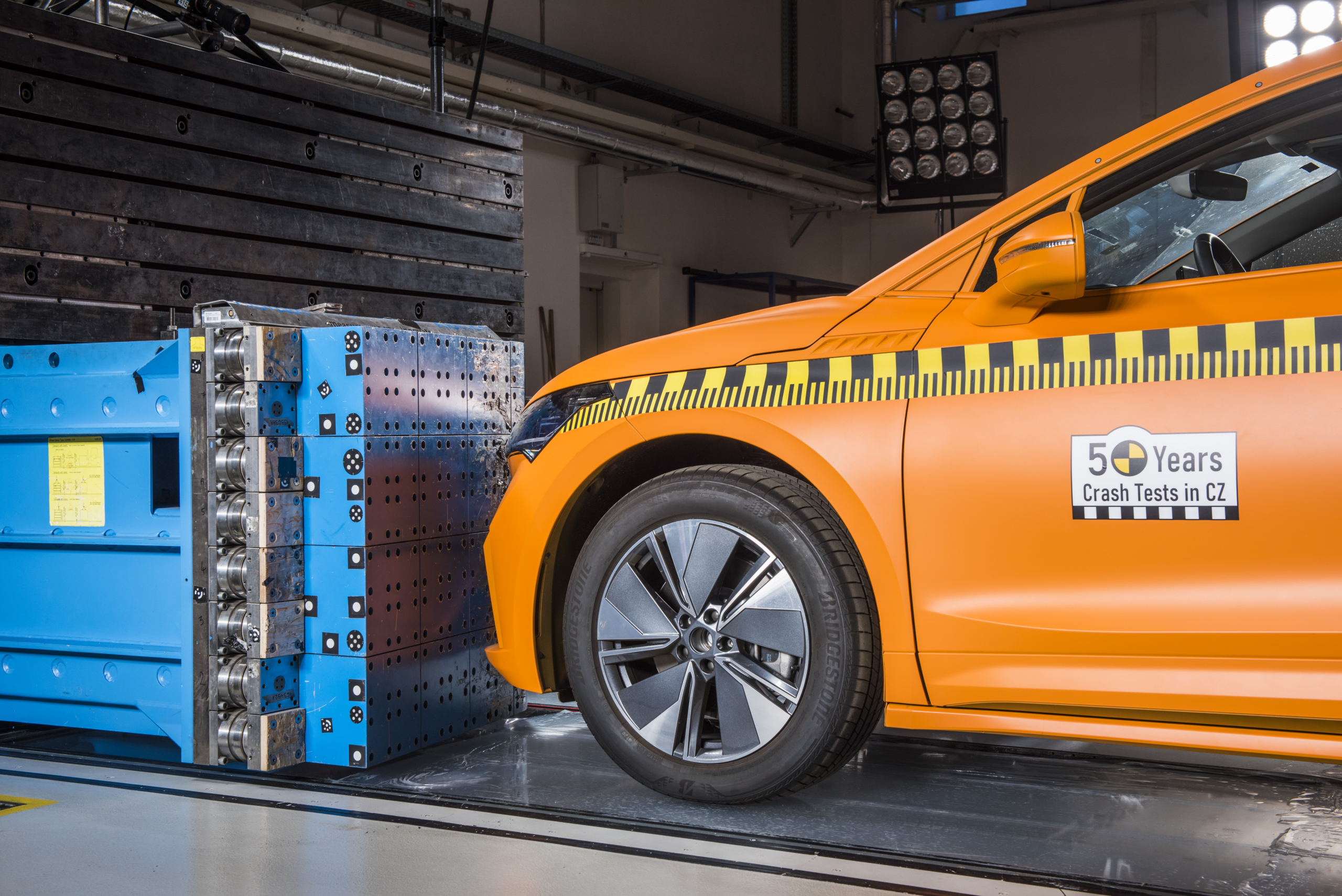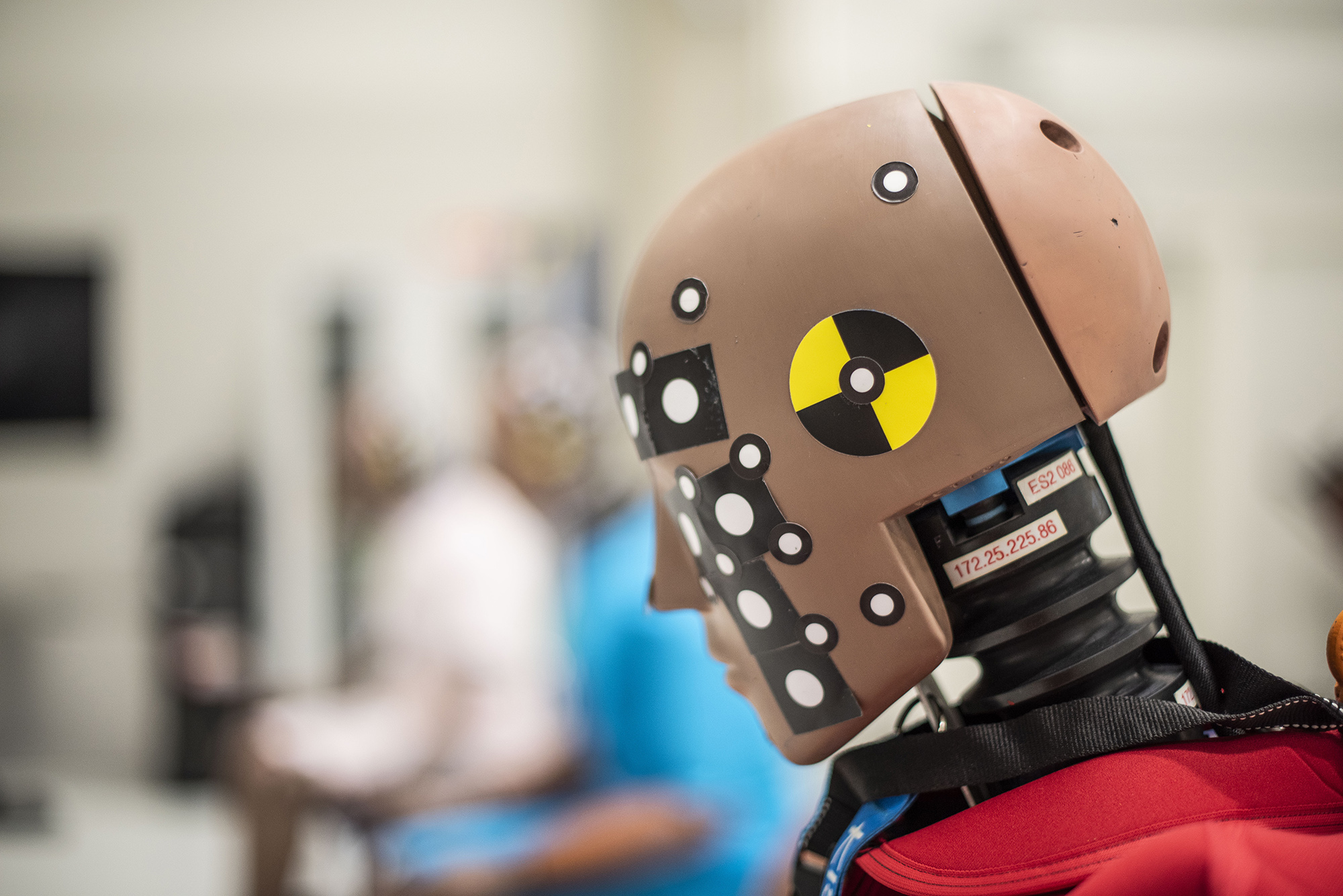The growing demands placed on car safety make testing a bigger challenge as well. ŠKODA has its own state-of-the-art MESSRING crash test lab. Take a look inside.
Crash testing has come a long way in the fifty years since it was first done in the Czech Republic. And ŠKODA has played a major part in this. Crash testing is now carried out in a state-of-the-art, modern laboratory at the test polygon in Úhelnice near Mladá Boleslav.
In the almost 200-metre-long hall ŠKODA can carry out an amazingly wide range of tests, from frontal crashes into solid obstacles, impacts when a barrier or pole hits the side of a car and various rear impacts, to head-on collisions between two cars.
The cars are propelled by a 600 kW MESSRING electric propulsion system, which can accelerate two vehicles weighing up to 3.5 tons towards each other up to a speed of 65 km/h, or accelerate one vehicle to 120 km/h. In the first case a track of 80 meters is sufficient, in the second case the entire track is needed. Equipped with the enhanced MicroTrack rail system, a precise guiding of passenger cars and sleds is achieved and the view from the film pit that is limited by a beam not wider than 70 mm only.
Step-by-step growth with almost no downtime
ŠKODA has owned its crash test laboratory since 2011, and the Czech carmaker has invested massively in further equipment and development. As cars grew in size, so did the demands of crash testing: for example, the requirement to be able to collide test two moving objects into each other. There was a planned expansion of the lab in 2018 and 2019, but most of the operations in the original part of the lab went ahead during the work. The first trial test took place in the new part of the hall on 1 February 2019, followed by a “live” test in March.


“In the original hall we removed the drive system, while the original HydroBrake is now permanently encased in concrete,” says Rudolf Tesárek, describing the fate of some of the original laboratory’s technical fittings. The installation of a MESSRING mobile barrier helped to speed up test preparation and expand the use of the laboratory. In 2020, the ŠKODA Crash Laboratory was given the prestigious “Crash Test Laboratory of the Year” award by Automotive Testing Technology International.
Types of crash test
ŠKODA carries out a number of crash tests in its crash laboratory, most of them during the development of a car to verify the functionality of its design. Needless to say, an advanced laboratory tests not only according to homologation requirements, but also according to the far more demanding conditions of various organizations such as the various NCAP associations (Euro, China…) or the North American NHTSA.
“We can perform virtually all the demanding modern tests here,”
Rudolf Tesárek – Crash Lab Manager
Examples of the tests carried out in the laboratory.
- “Homologation” frontal impact of 40% of the car’s width into a deformable obstacle at 56 km/h (ECE Regulation 94)
- Frontal impact of 40% of the car’s width into a deformable obstacle at 64 km/h, Euro NCAP
- Frontal impact of 100 % of the car’s width into a rigid obstacle at 50 km/h with a pair of female dummies
- Tests at lower speeds to verify the correct airbag deployment threshold (“must fire” and “no fire” tests)
- Side impact at 32 km/h into a pole
- Rear impact with a trolley into a stationary car at 30, 50 or 80 km/h, 70% displacement
Copright and intellectual property of the aricle belong to Škoda Auto

